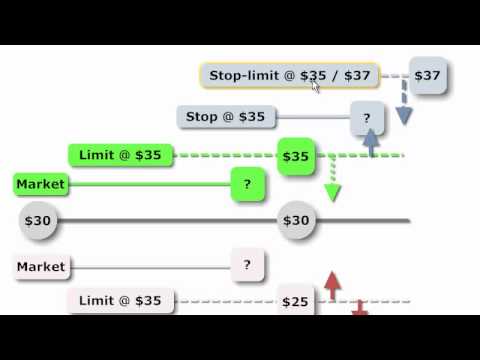Contents
When we want to summarize and find patterns within the same variable, then use univariate analysis to know the relationship between two variables that are referred to as bivariate analysis. Descriptive Statistics is a sub-division of Applied statistics that deals with quantifying the data. It provides a summary of the important characteristics or features of the data. It explains an event or a situation by organizing, analyzing, and presenting the data in a factual and useful way. These tables of graphs are a structured way to depict a summary of grouped data classified on the basis of mutually exclusive classes and the frequency of occurrence in each respective class. Instead of going around and measuring every single plant in the country, we might collect a small sample of plants and measure each one.
- Suppose the mean marks of 100 students in a particular country are known.
- It is a type of normal distribution used for smaller sample sizes, where the variance in the data is unknown.
- The range shows the degree of dispersion or the difference between the highest and lowest values within the data set.
- Inferential statistics uses the sample data to reach some conclusion about the characteristics of the larger population.
- If you have a choice, the ratio level is always preferable because you can analyze data in more ways.
Sample SizeThe sample size formula depicts the relevant population range on which an experiment or survey is conducted. It is measured using the population size, the critical value of normal distribution at the required confidence level, sample proportion and margin of error. However, inferential statistics are designed to test for a dependent variable — namely, the population parameter or outcome being studied — and may involve several variables. The calculations are more advanced, but the results are less certain. After all, inferential statistics are more like highly educated guesses than assertions.
Let’s say that 37% of people in our sample said that vanilla is their favorite flavor. Can we safely extrapolate that 37% of all people in the world also think that vanilla is the best? Well, we can’t say with 100% confidence, but–using inferential statistical techniques such descriptive vs inferential statistics as the “confidence interval”–I can provide a range of people that prefer vanilla with some level of confidence. Descriptive and inferential statistics are both statistical procedures that help describe a data sample set and draw inferences from the same, respectively.
Tools of Descriptive Statistics
When these data are processed scientifically, they become information, and when the information is used for decision making and retained for future use, they become knowledge. Statistics is a field of study that helps in the scientific processing of data. If your data does not meet these assumptions you might still be able to use a nonparametric statistical test, which have fewer requirements but also make weaker inferences. If you are studying one group, use a paired t-test to compare the group mean over time or after an intervention, or use a one-sample t-test to compare the group mean to a standard value.
We use charts, graphs, and tables to represent descriptive statistics, while we use probability methods for inferential statistics. Descriptive statistics explains already known data related to a particular sample or population of a small size. Inferential statistics, however, aims to draw inferences or conclusions about a whole population. Descriptive Statistics describes the characteristics of a data set. It is a simple technique to describe, show and summarize data in a meaningful way.
Dispersion or variability describes the spread or variation present within a data. Some common ways to know how the data is dispersed are given below. The most important measures of location or central tendency are mean, median, and mode. Let’s drill down on each of the types of descriptive statistics in the next section. For example, suppose we want to know ifhours spent studying per weekis related totest scores.

Different test statistics are used in different statistical tests. The Akaike information criterion is a mathematical test used to evaluate how well a model fits the data it is meant to describe. It penalizes models which use more independent variables as a way to avoid over-fitting. What’s the difference between univariate, bivariate and multivariate descriptive statistics?
The sample chosen must represent the entire population so it must have all the important characteristics of the population. So, how do you think we can ensure that the sample accurately depicts the population? We can only make predictions to check this accuracy and when we predict anything, what result do we get? For instance, the weights we saw above had weights of 10 students.
An Ultimate Guide to Learn and Implement SUMIFS in Excel With Practical Examples
In this post, we explore the differences in descriptive vs. inferential statistics, how they impact the field of data analytics. Interestingly, some of the measurement techniques are similar, but the objectives are different. So, we may observe the number of hours studied along with the test scores for 100 students and perform a regression analysis to see if there is a significant relationship between the two variables. Statistics, based on their application, can be classified as descriptive statistics, inferential statistics, predictive statistics, and prescriptive statistics. In this article, an attempt has been made to understand the two important classifications, descriptive statistics and inferential statistics. A t-test is a statistical test that compares the means of two samples.
Confidence intervals take uncertainty and sampling error into account to create a range of values within which the actual population value is estimated to fall. A measure of variability identifies the range, variance, and standard deviation of scores in a sample. This measure denotes the range and width of distribution values in a data set and determines how to spread apart the data points are https://1investing.in/ from the center. The 3 main types of descriptive statistics concern the frequency distribution, central tendency, and variability of a dataset. Rather than being used to report on the data set itself, inferential statistics are used to generate insights across vast data sets that would be difficult or impossible to analyze. Another tool used in inferential statistics is a confidence interval.

You can choose the right statistical test by looking at what type of data you have collected and what type of relationship you want to test. A p-value, or probability value, is a number describing how likely it is that your data would have occurred under the null hypothesis of your statistical test. The alpha value, or the threshold for statistical significance, is arbitrary – which value you use depends on your field of study. For interval or ratio levels, in addition to the mode and median, you can use the mean to find the average value.
Descriptive Vs Inferential Statistics: Which Is Better & Why
To test the significance of the correlation, you can use the cor.test() function. A chi-square distribution is a continuous probability distribution. The shape of a chi-square distribution depends on its degrees of freedom, k.

It can also be used to describe how far from the mean an observation is when the data follow a t-distribution. A t-score (a.k.a. a t-value) is equivalent to the number of standard deviations away from the mean of the t-distribution. Although the units of variance are harder to intuitively understand, variance is important in statistical tests. A data set can often have no mode, one mode or more than one mode – it all depends on how many different values repeat most frequently. Because the median only uses one or two values, it’s unaffected by extreme outliers or non-symmetric distributions of scores.
Descriptive and Inferential Statistics
While some of the statistical measures are similar in both, the methodologies and goals are very different. In this article, we discuss inferential vs descriptive statistics with examples and discuss the differences between the two. Regression models show the relationship between a set of independent variables and a dependent variable. This statistical method lets you predict the value of the dependent variable based on different values of the independent variables. Hypothesis tests are incorporated to determine whether the relationships observed in sample data actually exist in the data set.
So, if we want to draw inferences on a population of students composed of 50% girls and 50% boys, our sample would not be representative if it included 90% boys and only 10% girls. One common type of table is afrequency table, which tells us how many data values fall within certain ranges. Suppose a coach wants to find out how many average cartwheels sophomores at his college can do without stopping. A sample of a few students will be asked to perform cartwheels and the average will be calculated.
The p-value only tells you how likely the data you have observed is to have occurred under the null hypothesis. For a nominal level, you can only use the mode to find the most frequent value. For example, for the nominal variable of preferred mode of transportation, you may have the categories of car, bus, train, tram or bicycle. Nominal data is data that can be labelled or classified into mutually exclusive categories within a variable. However, unlike with interval data, the distances between the categories are uneven or unknown.
To collect data for any statistical study, a population must first be defined. ‘Population’ indicates a group that has been designated for gathering data from. A population could be a group of people, measurements of rainfall in a particular area or a batch of batteries. One of them is random sampling, which means that every item in the population data should have an equal chance of being selected in the sample. And that the selection of one item shouldn’t affect the selection of another.
You can use the CHISQ.TEST() function to perform a chi-square goodness of fit test in Excel. You can use the CHISQ.TEST() function to perform a chi-square test of independence in Excel. You can use the qchisq() function to find a chi-square critical value in R. You can use the CHISQ.INV.RT() function to find a chi-square critical value in Excel. If the bars roughly follow a symmetrical bell or hill shape, like the example below, then the distribution is approximately normally distributed.

Keine Kommentare vorhanden